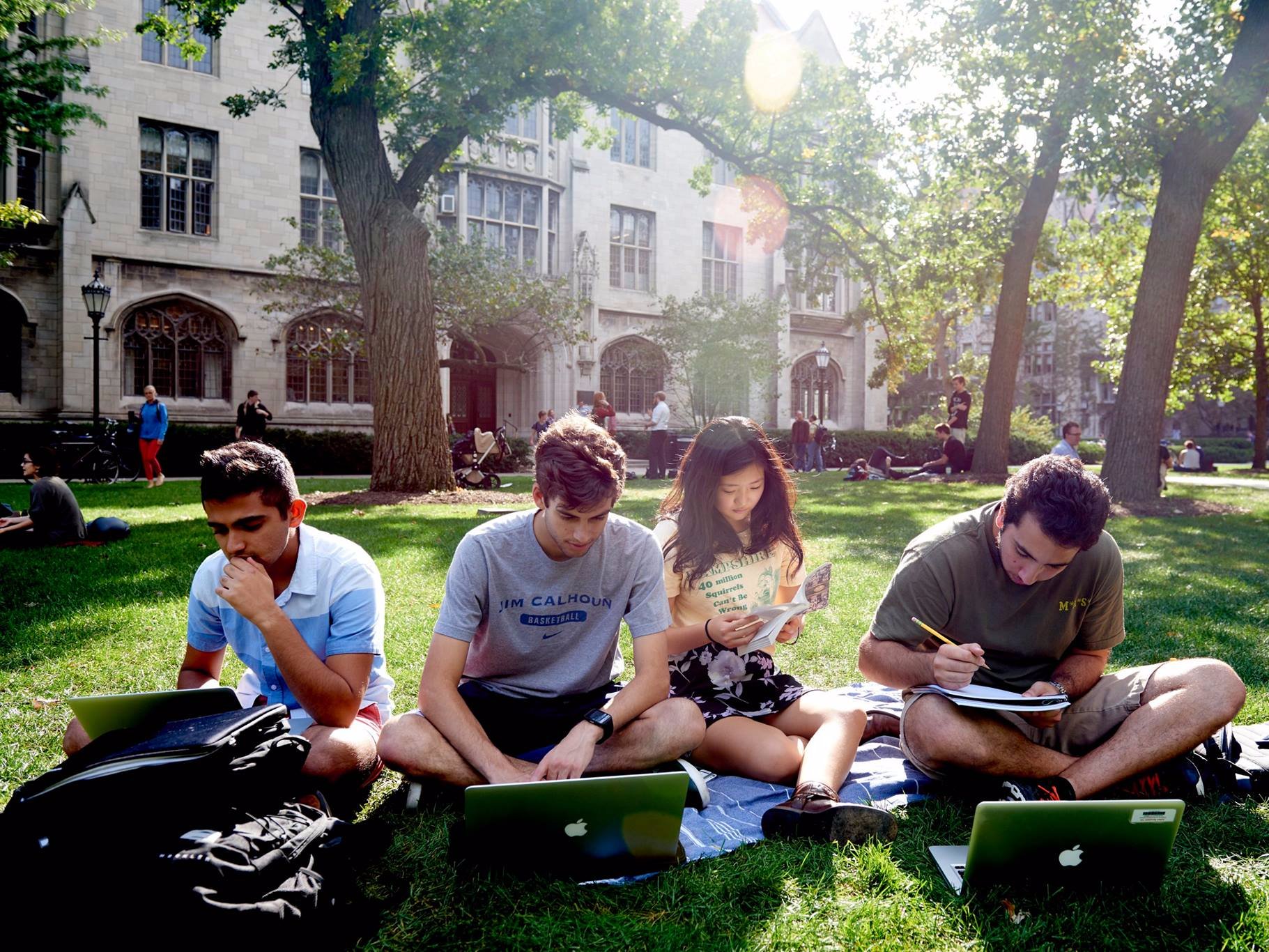
College is the great equalizer. That's the message proudly proclaimed by many in higher education, not to mention many parents trying to urge children who may not have trust funds to prepare for college.
But a new study says that the economic impact of college -- in postgraduation wages -- is very much tied to the income of students' families growing up, with students from wealthier families earning more than others. Some might assume that this difference is due to enrollment patterns, in that wealthier high school students are more likely than their less well-off counterparts to enroll at highly competitive colleges whose graduates are more likely to earn more in their careers. But the study found this impact even after controlling for a number of factors, such as competitiveness of college attended.
The study is by Dirk Witteveen, a doctoral candidate in sociology at the Graduate Center of the City University of New York, and Paul Attewell, a distinguished professor in sociology at the Graduate Center. Their work has just been published in the journal Social Forces (abstract available here). Their study differs with a recent, much publicized study finding that college is in fact the great equalizer, but the professors behind that study question some of the methodology in this new work.
 Witteveen said the impact is greater on black and Latino graduates, and is greater on women, than on white graduates and men. Justin Sullivan / Getty Images
Witteveen said the impact is greater on black and Latino graduates, and is greater on women, than on white graduates and men. Justin Sullivan / Getty Images
Their findings are based on an analysis of the national Baccalaureate & Beyond Longitudinal Study of 1993, which collected extensive information about people earning bachelor's degrees and their career paths after. The analysis excludes those who were unemployed 10 years out or who dropped out of college. The researchers then collected salary information about the 1993 graduates and controlled for such factors as selectivity of college, major and academic performance. In this way, the fact that wealthier students are more likely to end up at wealthier colleges should not skew the results.
They then used as a base the earnings of those who came from family incomes in the seventh decile from the bottom, 10 years out of graduating in 1993. They found a mean salary of $57,000. Those who were in the bottom decile and next to the bottom decile -- when controlling for the factors noted above -- earned 12.9 percent and 12.7 percent less, respectively than those in the seventh decile from the bottom. Those in the top two deciles earned 2 and 2.4 percent more than those in the third decile from the top.
While the study does not account for race, Witteveen said the impact is greater on black and Latino graduates, and is greater on women, than on white graduates and men.
So what does this mean?
Witteveen said in an interview that the findings do not mean low-income students don't benefit from going to college. Many studies, he said, have shown that students from any socioeconomic group will likely earn more with a bachelor's degree than a high school diploma. "You see big earnings differentials," he said.
As to the differing impact of a college degree on people from different levels of family wealth, Witteveen said he believes the advantages of wealthier families pay off in job searches of their offspring. "Their parents are better connected, they may set their children up in cities with jobs. They may be people like those doing the hiring. These are all circumstantial class-related resources," he said. The paper refers to these advantages as "parental bridging."

Colleges may not be by themselves able to provide similar advantages to their graduates from low-income families. But some do appear to focus on this issue.
The Carolina Covenant, a program at the University of North Carolina at Chapel Hill that offers generous scholarship aid to low-income students, also offers them training in financial literacy and budget planning, business etiquette dinners, and seminars on public speaking.
Told about the program, Witteveen said that this was the kind of thing colleges need to do to narrow the advantage of wealthier students.
Mark S. Schneider, vice president and fellow at the American Institutes for Research, does research on earnings and career outcomes of college graduates. Via email, he said, "This paper confirms what we have known -- that social class mobility is far more limited than we hoped and that higher education is not eliminating all the differences in wage outcomes that can be traced back to social class."
Schneider said he worried the findings would discourage low-income students. "While being born into the right family clearly gives a student a major advantage in the post completion money chase, this should not mean that students enrolling in a college should see engraved on the entrance hall the same thing that Dante envisioned at the entrance to hell: 'Abandon all hope, ye who enter here.'"
A recent study by the National Bureau of Economic Research reached very different findings, largely concluding that colleges are in fact equalizers. (Much of the NBER study focused on the idea that some colleges are better than others at promoting economic advancement, but the study stressed that colleges are in fact tools of such advancement.)
John N. Friedman, associate professor of economics and international and public affairs at Brown University and one of the authors of that study, questioned the new research by the CUNY Graduate Center team. Friedman said he remained confident that the NBER study was more accurate. Specifically, he faulted the new study for having bands of college selectivity based on Barron's Profile of American Colleges, which Friedman said grouped together colleges too broadly.
Via email, he said that "by adjusting only for broad selectivity bins, and not for exact college, these authors are implicitly comparing the many lower-earning poor kids at [the University of California, Los Angeles] with the many higher-earning rich kids at Princeton [University] and arguing that it is the differences in parent incomes, rather than the school, that explains it. Our work instead compares rich kids at Princeton only to poor kids at Princeton, which (as you might expect) generates considerably smaller differences by parent income."
Read the original article on Inside Higher Ed. Copyright 2017. Follow Inside Higher Ed on Twitter.




